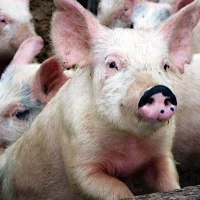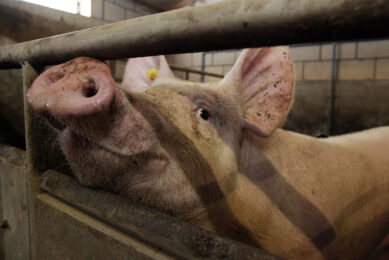Right particle size reduces feed costs

Most pork producers know that particle size has an impact on feed efficiency. As particle size is reduced, the digestibility of the diet improves, a Kansas State University animal scientist explained.
K-State
recommends that particle size be maintained at approximately 700 microns with an
optimal range of 650 to 750 microns, said K-State Research and Extension swine
specialist Bob Goodband.
Larger particle sizes result in poor feed
efficiency. Smaller particle sizes increase the energy cost of grinding,
susceptibility to ulcers, and problems with feeders’ and bins’
bridging.
“The particle size of the diet can have a huge economic impact
in your costs of production,” he said.
“For every 100 microns that
particle size is above the recommend range, the resulting cost for lost feed
efficiency will be about 65 US$ cents per pig.
“For example, suppose you
haven’t checked your particle size recently, and it has crept up to 1,000
microns. If you reduce that particle size to 700 microns, that will save you
almost $2 for every finishing pig marketed.”
Goodband said producers can
ensure proper particle size by performing routine maintenance, such as changing
hammer mill screens or turning hammers. Producers should also adjust the gap
between rolls and re-groove rolls in roller mills
regularly.
Join 26,000+ subscribers
Subscribe to our newsletter to stay updated about all the need-to-know content in the feed sector, three times a week. Beheer
Beheer









 WP Admin
WP Admin  Bewerk bericht
Bewerk bericht